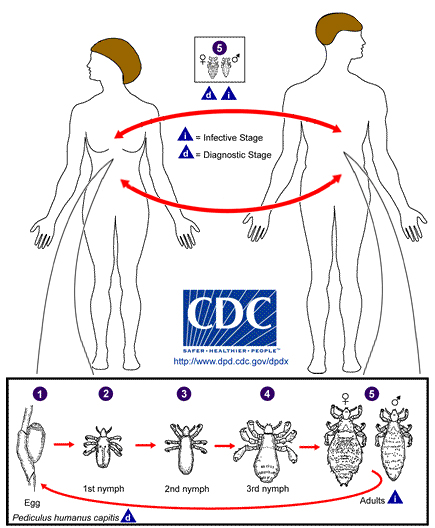
Reproduction
Reproduction varies only slightly between the two subspecies.
Pairing between a male and a female can happen at any time
however it will typically happen right after feeding
(Bacot
1971). Pediculous humanus humanus
males can fertilize many females in succession. During a study
at Cambridge University 21 females were introduced to the male
in succession and 18 of them were fertilized. Pediculous
humanus capitis was much less effective, after
four attempts the highest result was 10 females being fertilized
(Bacot 1971).
During the same study it was determined that the average female
could lay eggs for 16-18 days after initial fertilization with a
male in Pediculous humanus humanus where
the Pediculous humanus capitis averaged
only 7-11 days
(Bacot 1971). During the time period of fertilization
the Pediculous humanus humanus female on
average will lay around 5 eggs a day and the Pediculous
humanus capitis will lay only a slight amount less at
around 4 eggs. It has also been determined that while food may
increase the fertility of the male it will not prolong the length of
time that a female can have eggs or the amount she lays per day
(Bacot 1971).
After an egg is laid it will typically hatch within 4-5 days. The hatchling will then molt it’s first time within in 7-8 after being laid (Bacot 1971). It will molt a second time after 11-12 days after which it will be an adult. This pattern is typically true between both species (Bacot 1971).
